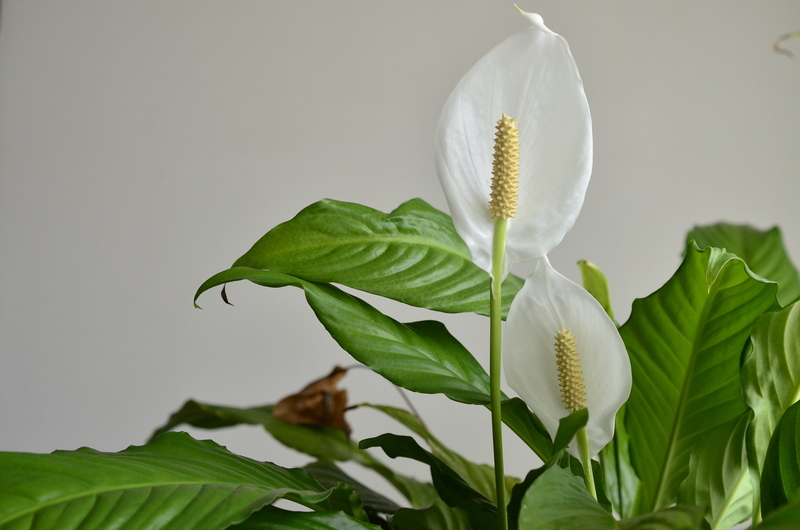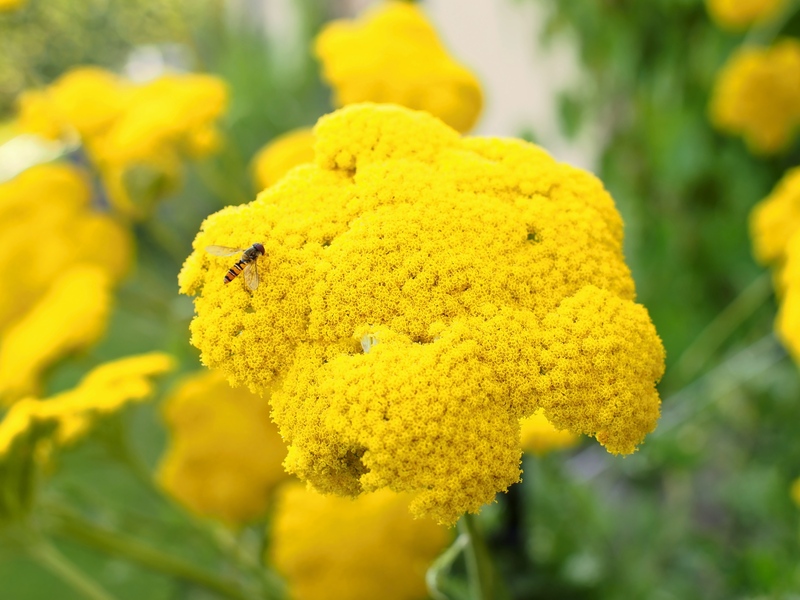Practical Tips to Get Rid of a Tree Stump Fast
If you've recently removed a tree, you might be left with an unsightly stump that's not only an eyesore but also a hazard in your yard. *Getting rid of a tree stump quickly* can free up valuable space and prevent regrowth or pest infestations. In this comprehensive guide, we'll explore effective, expert-approved methods to remove a tree stump promptly and restore your landscape.

Why Should You Remove a Tree Stump?
- Prevents Pest Infestation: Tree stumps can attract termites, ants, and other wood-boring insects.
- Improves Aesthetic Appeal: Eliminating a stump gives your yard a cleaner, well-maintained look.
- Eliminates Trip Hazards: Stumps can be dangerous, especially for children and pets.
- Prevents Regrowth: Some species will attempt to sprout new shoots from remaining stumps.
- Frees Up Space: Removing the stump makes way for new landscaping or construction projects.
How to Get Rid of a Tree Stump Fast: A Complete Guide
Manual Methods: Remove a Stump by Hand
If you prefer a physical approach and the stump is relatively small, you can dig up the stump manually. This is a cost-effective and environmentally friendly method, but it does require effort. Here's how:
-
Gather Your Tools:
- Shovel
- Mattock or pickaxe
- Bow saw or axe
- Garden loppers
- Work gloves for protection
- Heavy-duty steel-toed boots (recommended)
- Expose the Roots: Dig around the base of the stump to expose as much of the root system as possible. Be sure to dig wide and deep, so you can access larger roots.
- Cut the Roots: Use your saw and loppers to cut through the thick roots. A mattock can help pry them loose.
- Remove the Stump: Once the main roots are severed, rock the stump back and forth to loosen it. *Use leverage* with your tools to pry the stump out.
- Fill the Hole: Backfill the hole with topsoil or a compost-soil mix to level the ground and encourage healthy grass growth.
Tip: For larger tree stumps, this method can be labor-intensive. Consider enlisting help or using alternatives below.
Stump Grinding: The Fastest Professional Solution
When speed is your priority and the stump is particularly large or tough, stump grinding is often the fastest and most efficient method. This technique utilizes a powerful machine to shred the stump into mulch.
- Renting a Stump Grinder: Most home improvement stores or equipment rental companies offer stump grinders for DIY use. You usually pay by the hour or day.
- Preparation: Clear the area of debris and rocks. Cut the stump as close to the ground as possible using a chainsaw for easier grinding.
- Operating the Grinder: Follow all manufacturer instructions. Wear protective gear including goggles, gloves, long sleeves, and ear protection.
- Grinding Process: Sweep the grinder back and forth over the entire stump until it's ground several inches below the surface.
- Cleanup: Remove wood chips and fill the hole with soil or use the mulch for landscaping.
*Hiring a professional stump removal service* can make the process even swifter and relieve you of heavy labor. The pros have industrial grinders and extensive experience to ensure the job is completed efficiently and safely.
Chemical Stump Removal: Fast Breakdown Without Machinery
If you prefer a less physically demanding option, using a tree stump killer or commercial stump remover is a practical choice. While not as immediate as grinding, chemical removal can significantly speed up natural decomposition.
- Drill Holes: Use a power drill and a large bit to bore several deep holes into the top and sides of the stump. More holes allow chemicals to penetrate deeply.
- Apply Chemical Stump Remover: Pour or brush the stump killer into the drilled holes. Most products contain potassium nitrate, which accelerates wood decomposition.
- Saturate With Water: Add water to the holes unless the product instructions specify otherwise. This activates the chemicals and spreads them throughout the stump.
- Wait for Decomposition: Over several weeks, the stump will become soft and spongey. You can then remove it with a shovel or burn it safely.
- Safety Notice: Always read and follow the manufacturer's instructions and keep pets and children away from treated area during the process.
Pro Tip: Accelerate the process by scoring the external bark or using an axe to split the stump after applying chemicals.
Burning a Tree Stump: Quick and Effective for Dry Wood
In certain rural or less regulated areas, burning offers a rather fast way to eliminate a stump. Always check local fire codes and obtain necessary permits before initiating a burn.
- Prepare the Stump: Cut the stump as low as possible. Drill holes into the top and fill with kerosene or commercial stump remover designed for burning.
- Let the Stump Soak: Allow the chemicals to permeate the wood for several days. *This helps the stump to catch fire more easily*.
- Ignite Safely: Surround the area with a non-flammable barrier. Ignite the stump carefully and monitor the burn until it is completely reduced to ash.
- Dispose of Ashes and Refill: Shovel the ashes and debris out and fill the hole with topsoil.
Note: This method is not suitable for urban areas or during fire bans.
Natural Decomposition: Eco-Friendly, Yet Slower
If you're not in a rush, letting the stump decompose naturally is the most eco-friendly and effortless method. While not the fastest, you can speed up the process by encouraging rot.
- Keep the Stump Moist: Water the stump regularly to create favorable conditions for fungi and microbes.
- Apply Nitrogen: Sprinkle a nitrogen-rich fertilizer over the stump to feed decomposing organisms.
- Cover With Compost: Pile kitchen scraps or compost over the stump to hold in moisture and introduce helpful bacteria.
- Drill Holes or Score: *Increase the surface area* for fungi by drilling holes or cutting notches into the stump.
Tip: For faster results, combine this method with chemical accelerators or regular manual intervention.
How to Decide Which Stump Removal Method is Fastest for You?
Choosing the best tree stump removal technique depends on these factors:
- Stump Size: Large hardwood stumps require professional or chemical methods for speedy removal.
- Location: Tight spaces or proximity to structures might restrict certain machinery or burning techniques.
- Budget: Manual removal and decomposition are cheap, while grinding and professional services cost more but deliver rapid results.
- Physical Ability: Manual digging is labor-intensive.
- Legal Codes: Local regulations may prohibit burning or chemical use.
- Desired Speed: Stump grinding or burning yields the quickest results; chemicals and natural decomposition are slower.
Best Fast Stump Removal Methods Overview:
- Stump Grinder: Quickest solution for any stump size; suitable for urgent landscaping needs.
- Chemical Removal: Best option for less physical work, medium speed for wood to rot.
- Burning: Works well with proper precautions and legal clearance; delivers fast results.
- Manual Extraction: Quick for small stumps, challenging for larger ones.

FAQs: Fast Tree Stump Removal
What's the absolute fastest way to remove a tree stump?
Stump grinding with commercial equipment is generally the fastest technique. A professional can often grind down a standard-size stump within a couple of hours.
Can I remove a tree stump with household items?
While it's difficult to eliminate a large stump with only household items, you can use tools like a shovel, axe, and loppers for smaller stumps. For chemical methods, Epsom salt or rock salt may be used to speed up rot, but these options are slower than commercial products.
How soon after tree removal should I get rid of the stump?
It's best to tackle the stump as soon as possible after tree felling to prevent regrowth and pest issues. Dry stumps are easier to burn or grind.
Should I hire a professional or attempt DIY stump removal?
For large, tough, or inaccessible stumps, hiring a pro is recommended for speed and safety, especially if you lack experience with heavy equipment. For small stumps, a determined homeowner can usually handle removal DIY with the right techniques.
Are chemical stump removers safe for pets and wildlife?
Most chemical stump removal products contain potassium nitrate, which can be harmful if ingested. Keep pets and children away from treated areas until the chemical has broken down, and always read the label for safety instructions.
Can burning a stump go wrong?
Yes, if not monitored carefully, burning a stump may cause underground roots to ignite, leading to unexpected flare-ups. Never burn stumps during dry or windy conditions and always have water or an extinguisher ready.
Conclusion: The Smartest Way to Remove a Tree Stump Fast
Removing a tree stump rapidly isn't just about speed; it's about choosing the right method for your situation. Whether you opt for stump grinding, chemical removal, burning, or manual extraction, following best practices will save you time and effort while revitalizing your outdoor space.
Ready to reclaim your yard? Use these practical, proven tips, and you'll enjoy a stump-free landscape in no time!
- Stump grinding: Fastest, most efficient solution
- Chemical removal: Least physically demanding
- Burning: Best where permitted and safe
- Manual removal: Great for small stumps or those with limited equipment access
Whatever method you choose, proper preparation and safety measures are key to success. Take action today and you'll soon have a tidy, hazard-free lawn!